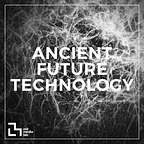[AFT Fall ’21] Of Carved Radishes, Recipes and Rituals/Gratitude as Co-Voyagers
A response to: What does Ancient Future Technology mean to you?
By Corinne Okada Takara
As we move rapidly into a time of climate change, how might we knit knowledge and perspectives across generations, cultures and species to imagine a sustainable future for all earthlings? How might we elevate the wisdom and perspectives of ancestral cultures to form new tools, solutions, and frameworks to reshape our view of our place in this world and beyond? The framing of Ancient Future Technology raises these questions and creates a space to center the voices of global ancestors and living Indigenous cultures who have been pushed to the edges of the conversations of what is considered innovation and technology.
Casting our eyes onto the horizons of space, we are already storytelling and exploring with biology as co-voyagers as we grow vegetables aboard the ISS and send yeast as scouts into deep space. In challenges such as the Deep Space Food Challenge, researchers are drawing inspiration from the food systems of our global ancestors to envision space voyaging sustenance with organisms such as Aztec tecuitlatl (spirulina), insects such as silkworms, and mycelium.
New horizons on both micro and macro scales will require new types of cartography. Cartography innovation may draw inspiration from a range of Ancient Future Technology such as the wooden handheld coastline carving maps of the Inuit of Kalaallit Nunaat (Greenland) and the ahupua’a, a sustainable mapping system of Kānaka Maoli (Hawaiians). These divisions of land, as thin pie-like slices, span from mountain to sea, so that the flow of the natural water system is taken into account in land usage and management.
As we innovate with biology on Earth and in space, we need to also cultivate ethical and sustainable frameworks, as co-voyagers with our fellow biology. In the Florentine Codex, Indigenous Nahal scribes documented a reverence and care for maize sharing, that Nahua women blew on maize before putting it into the cooking pot so that it would not fear the fire. In Oceania, ancient Polynesians prepared an ecosystem of sustainable food prior to setting out to sea, burying breadfruit to ferment for years before packing it as sustenance for themselves and animals on their long voyages through the most remote expanses of ocean to settle and terraform the islands of Hawaii. The “canoe plants,” the plants and animals they brought to Hawaii, were anchored to the new land through stories and rituals of gratitude. Examining traditions of gratitude, ritual, and coexistence with other organisms will make us better co-voyagers as we co-shape a future for all earthlings in our journey into the unknown.
For the past several months, I have been bringing conversations of Ancient Future Technology to Salinas Alisal High School students participating in the NASA-sponsored Growing Beyond Earth program. In this Xinampa Community Biolab program, students grew a range of radish cultivars in simulated Mars soil in a grow box sent by MarsFarms. Growth data is shared back to NASA. To supplement the experiment, I invited students to share cultural traditions of carving radishes as a way to inform thoughtful speculative design imaginings of food rituals and harvesting in space. I shared my attempt at creating a mukimono carved radish (a fancier version of the ones my family makes for Japanese New Year’s celebration dishes), and co-instructor Leticia Hernandez shared the carved radishes of the Oaxaca festival Noche de los Rábanos. One student was excited, as he had actually been to the festival and was able to share more about it.
These discussions highlight the value of the ancestral and community knowledge students themselves bring to the table. Such sharing makes a fertile ground for richer speculative design as we imagine the food traditions we might bring, and imagine the new ones that may emerge in our voyages beyond the cradle of Earth. Framing technology as both ancient and future can reshape our view of our place in this world, inspire deep innovation as we imagine a sustainable future for all earthlings, and empower more people to see themselves as shapers of that vision.
Corinne Okada Takara is an artist & STEAM educator. Find her on Instagram (@corinnetakara).
